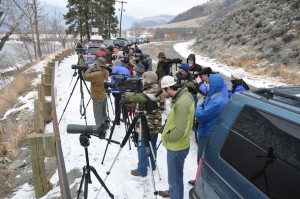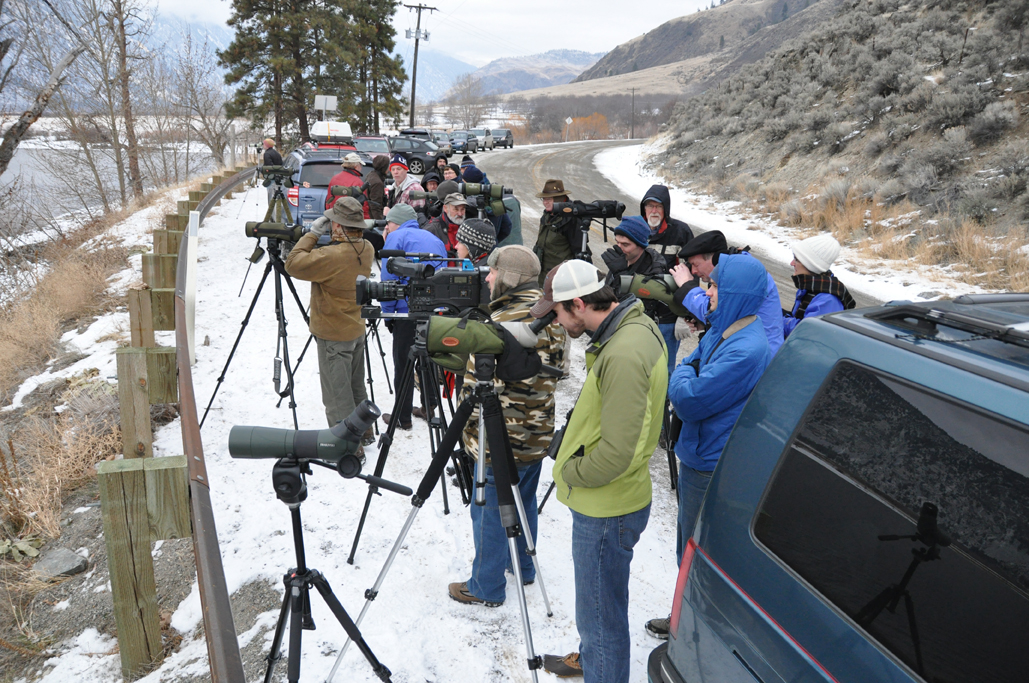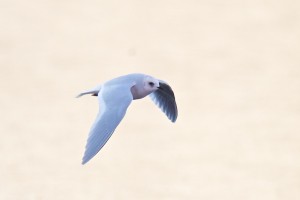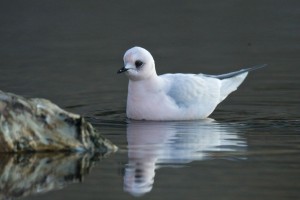628 miles for a gull? Most of my closest friends are not birders, and while I encouraged all of them – with some success – to not refer to them as sea gulls, little could convince them that it was normal to drive over six hundred miles in a single day to see one.
But this one, as I tried to describe, is one of the most sought after species in North America. It nests in mostly inaccessible tundra in northern Canada and winters on pack ice in the middle of the Arctic Ocean. To see this Arctic ghost, birders have two choices: polar bear-ridden Churchill Manitoba in summer where a handful may still nest or Barrow Alaska – the northern-most point in North America – in early October where they pass by the thousands on their way to their wintering “grounds”. And this bird was seen at Palmer Lake, just a snowballs throw from the Canadian border in eastern Washington. This, I explained further, was a heck of a lot closer than the tundra.
“OK. Does it look cool?” Hmph. Most gulls have white heads and bodies with gray mantles, the shade of which is somewhere between beached driftwood and charcoal. But the Ross’s Gull is special, I explained. In the two dozen gull species that regularly occur in North America, the Ross’s has stood out ever since I picked up my first field guide at age 5: a pencil-thin black collar in breeding season with silvery wings blending into a pure white body washed with pink. If North American gulls were saltwater taffy, the Ross’s would be a single piece of muted bubble gum in a bag of vanilla.
With my friends attention span dangling – and my masculinity – by a thread, I blurted out “but it’s been picking rotten flesh off a half-submerged deer carcass.” Cool gull indeed.
This northern species rarely pierces the U.S. / Canada border – about one a year – and these wayward individuals cause a furor in the birding community when they do: Massachusetts in 1975, Salton Sea in 2006, and McNary Dam in 1994, Washington’s only other record for the species. The population of Ross’s Gulls is estimated to be around 50,000, but this is very hard to estimate because breeding pairs are dispersed widely in very remote areas. In fact, no more than 10 pairs are found in Canada in any given year. The Committee on the Status of Endangered Wildlife in Canada lists the species as threatened and identifies oil development in the Beaufort and Chukchi seas as a potential threat to the large concentrations that gather there in fall. But, “given the rate at which climate change is affecting the Arctic, any obligate Arctic-adapted species should be considered under imminent threat … Climate change represents an unknown effect on the reproductive ecology of Ross’s Gulls.”
This tragic irony isn’t lost on me: driving hundreds of miles to see a bird whose species is under threat of oil development and climate change. The internal conflict between the adult bird conservation professional and the five-year-old gripping the dog-eared field guide was intense but short-lived. The kid won; I had to see this bird.
My alarm was set for 3am on Friday December 23, but I woke up at 2. This wasn’t what I was expecting when I set my head down on the pillow just three hours prior, but I needed to be on the road if I was going to make it back home to start the holidays that evening. I met friends Brendan and Todd and point our car east. The sun wouldn’t join us for another four hours. The excitement in the car was palpable, but we were careful to temper our enthusiasm in the face of the fact that threatens any successful bird chase: birds have wings.
After only a quick stop in Euphrata, we arrived at Palmer Lake – my first visit to this destination – at 9:45am. Other birders were present and had been working the lake shore since dawn. After finding the half-submerged deer carcass that gull had been frequenting since its discovery a week prior, we heard the phrase all bird chasers hate, but expect to hear: “you just missed it.”
We only had 2 hours to dedicate to the search so we quickly found an access towards the northern end of the lake. As I scanned the lake, I quickly found a small white gull circling the adjacent shore. “Hey guys I got a small white gull flying … wait … with dark underwings!” The gull had disappeared behind a point. We all sprinted down the ice-encrusted rocky shoreline to get a better look.

We couldn’t find it but we did find about 35 other birders up on the road with their scopes trained on where it had landed. Unfortunately, it was nothing more than a distant white dot obscured by a thick pile of reeds. For thirty minutes we waited in the cold and squinted through teary eyes to make out the pinkish wash on the white dot.
This view was hardly satisfactory, was the 5.5 hour drive for not?
Then, to the delight of the crowd, the gull went aloft to begin foraging on the opposite side of the lake. Watching a species for the first time is one of the most exhilarating parts about birding for me. Of course, there is the satisfaction on checking another box on your life list (the number of bird species you have seen in your life). But, even if it is a bird you have known about since you were a kid, you get to observe how it lives. I was transfixed by the birds’ buoyant flight as it wheeled back and forth and how it held its wings parallel to the ground facing the wind as it picked its food from the surface of the ice.
After just 45 minutes, we had to pull ourselves away to start the 5.5 hour drive home. My North American life list had grown by one; my inner five-year-old was ecstatic.
|
|




Great writing, Adam! Very entertaining and had me hooked.